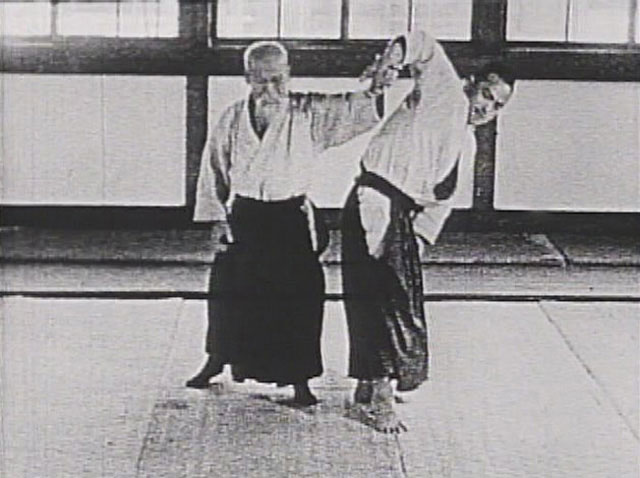In 1974 Morihiro Saito Sensei published the third volume of Traditional Aikido Sword Stick and Body Arts. In the foreword to the book, he stated that he wrote “the words bequeathed by Founder Morihei Ueshiba which represent the heart of techniques”. Known as kuden, such short sentences may help the Aikido practitioners to better understand the purpose of the techniques and the way they should be executed. Moreover, kuden help everyone to remember the spirit that originated the didactic system in which every Aikidoka still trains today.
Nevertheless, as western practitioners, we are accustomed to a very conceptual approach to the study of the art. We want to understand everything, splitting every movement into small fractions, so that we can claim to have the control of every single step of the technique we’ll execute.
The third principle of Aikido, known as sankyo, refers to the capability to control the partner’s forearm by grabbing his hand so that the wrist starts rotating and overstretching, causing the compression of arms tendon and a sudden pain to the wrist, elbow, and shoulder.
The mechanic dynamics of sankyo have been thoroughly investigated and every school and style has its own didactics in order to make it understandable. Some researchers (Olsonfrank, Seitzfrank and Guldbrandsen) offered in 1994 a research paper titled “An anatomical analysis of Aikido’s third teaching: an investigation of Sankyo” in which the technique is accurately described in its effects on the human body.
Given that every Aikidoka sooner or later experiences sankyo and its impact on the body and on the whole system, we prefer to focus onto the aspects which underlie the kuden.
When describing shomen uchi dai sankyo omote waza, Saito Sensei reports the following kuden:
“Position yourself side by side with your partner”
Let’s see three reasons why it is important to properly understand sankyo:
- When performing this technique in its basic form, it is mandatory to stick the partner’s hand to the own chest. By doing this and then by positioning side by side with the partner, the torsion caused to the partner’s forearm is very explosive and the efficiency of the technique reaches its peak. So we can say that tori (aite, nage, whatever), in order to perform a good technique, must foresee to let the partner’s hand be stuck to his more delicate part of the body, allowing in a certain way the partner to enter in his most secret and weak room. We can also state that, as it happens for most of the Aikido techniques, tori can apply a technique only if he accepts to change his position and taking the point of view of the partner.
- As if they were mirrored continuously, the two individuals that make the technique possible by coupling through an attack and a technique, change their polarity. When receiving sankyo, the only way to preserve and save the wrist is to step and walk back in the same rotating direction in which the center of tori rotates. We can therefore say that the kuden is right also for uke, who will be able to resist to the pressure and to the pain only if he will accept to stand side by side with his partner, changing continuously his point of view.
- With the partner and not against. A short word that changes dramatically the perspective of a martial discipline. From a certain point of view, performing a technique “against” someone -especially his joints- is somehow resolutive. But, if the kuden states with and not against, this is surely for a clear reason.
Understanding which it may be, that’ the purpose of the practice.

